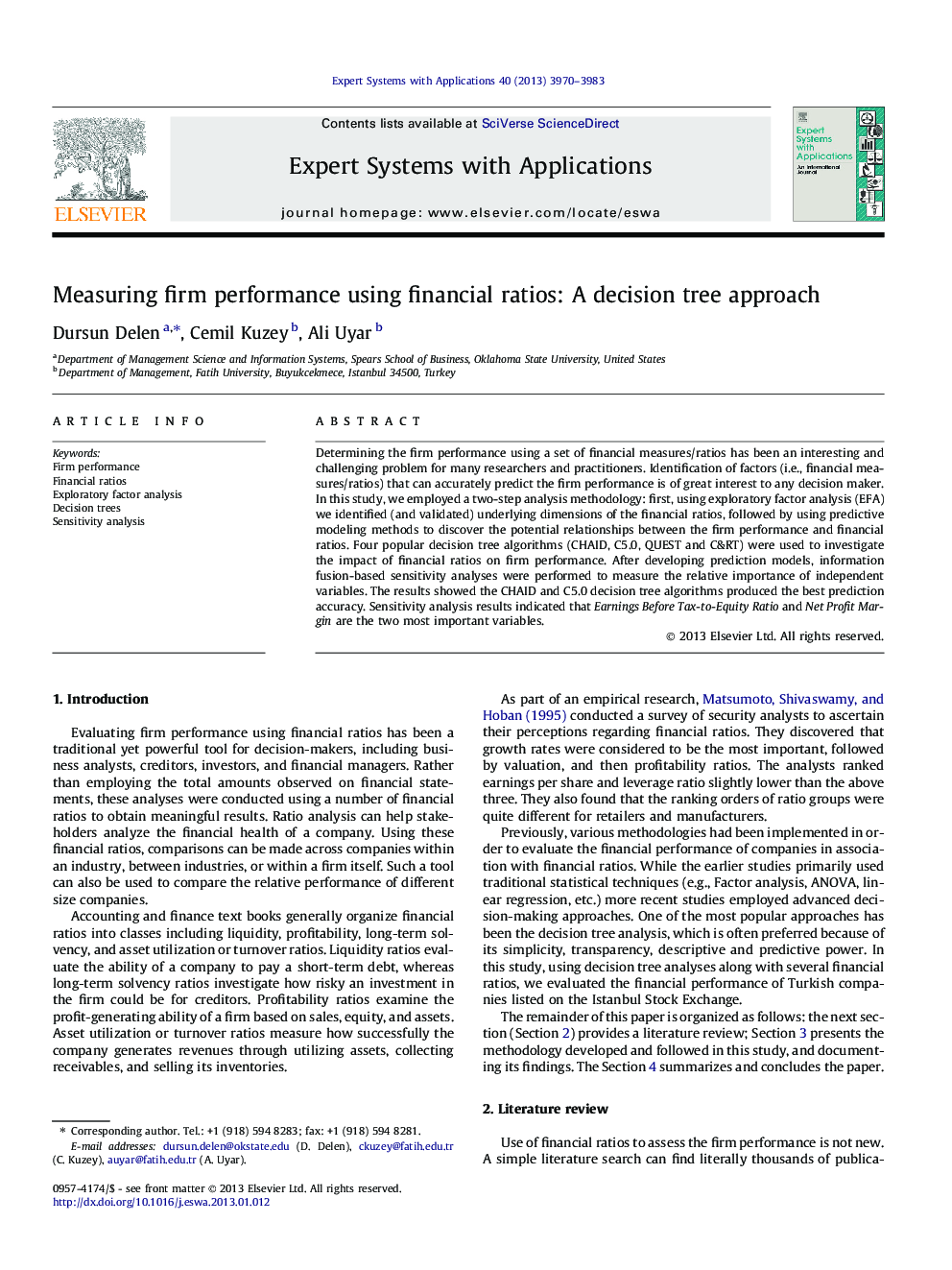| Article ID | Journal | Published Year | Pages | File Type |
|---|---|---|---|---|
| 383898 | Expert Systems with Applications | 2013 | 14 Pages |
Determining the firm performance using a set of financial measures/ratios has been an interesting and challenging problem for many researchers and practitioners. Identification of factors (i.e., financial measures/ratios) that can accurately predict the firm performance is of great interest to any decision maker. In this study, we employed a two-step analysis methodology: first, using exploratory factor analysis (EFA) we identified (and validated) underlying dimensions of the financial ratios, followed by using predictive modeling methods to discover the potential relationships between the firm performance and financial ratios. Four popular decision tree algorithms (CHAID, C5.0, QUEST and C&RT) were used to investigate the impact of financial ratios on firm performance. After developing prediction models, information fusion-based sensitivity analyses were performed to measure the relative importance of independent variables. The results showed the CHAID and C5.0 decision tree algorithms produced the best prediction accuracy. Sensitivity analysis results indicated that Earnings Before Tax-to-Equity Ratio and Net Profit Margin are the two most important variables.
► Determining firm performance using financial ratios is an interesting problem. ► Decision trees are among the most popular and useful data mining techniques. ► EFA is used to identify and validate underlying dimensions of the financial ratios. ► CHAID and C5.0 decision tree algorithms produced the best prediction accuracy. ► Earnings Before Tax-to-Equity Ratio and Net Profit Margin are the two most important factors.
